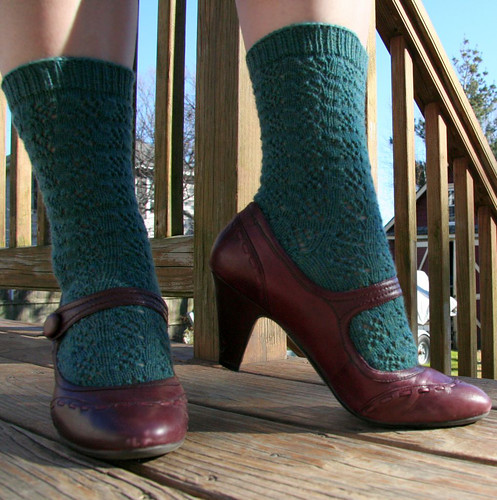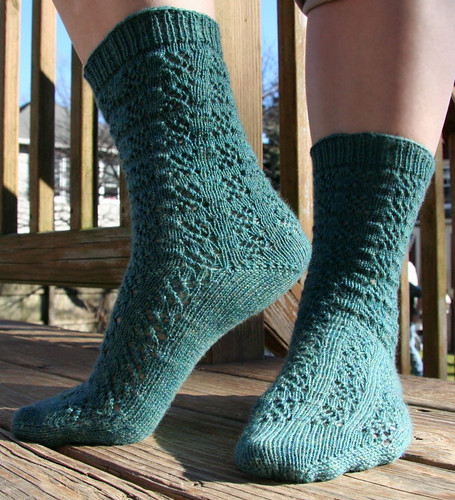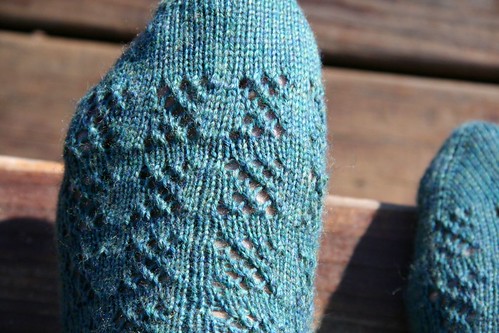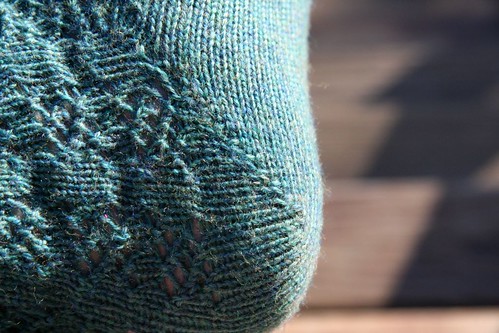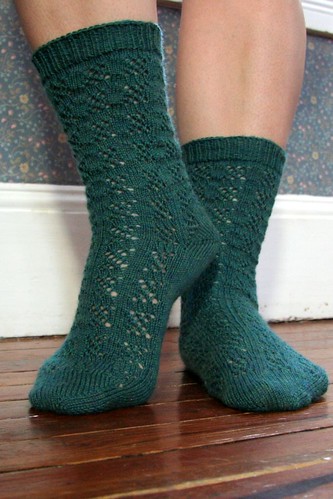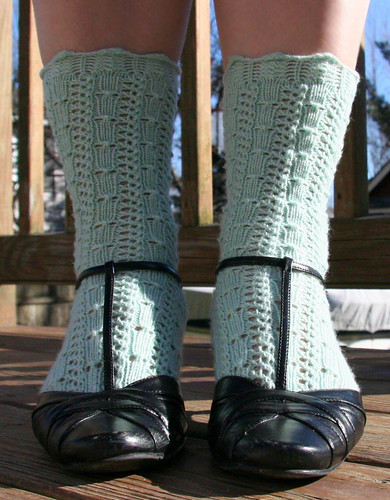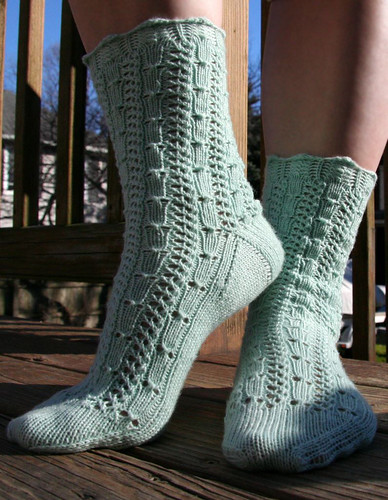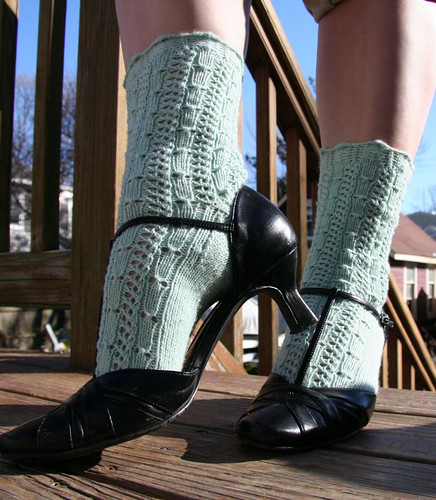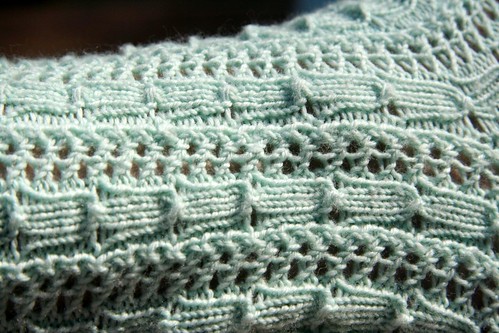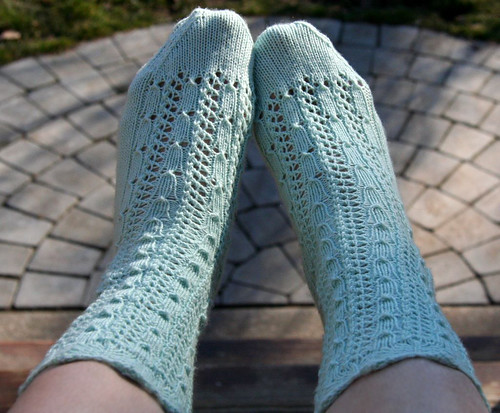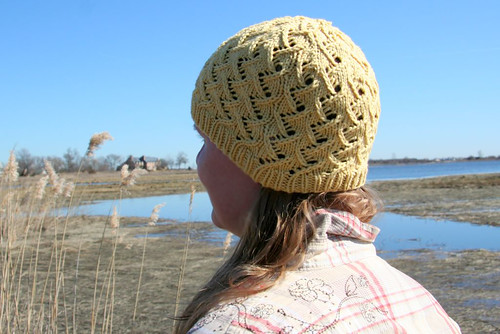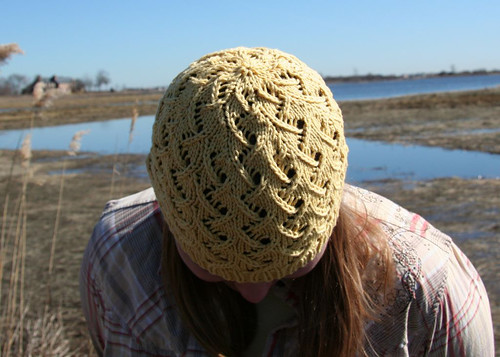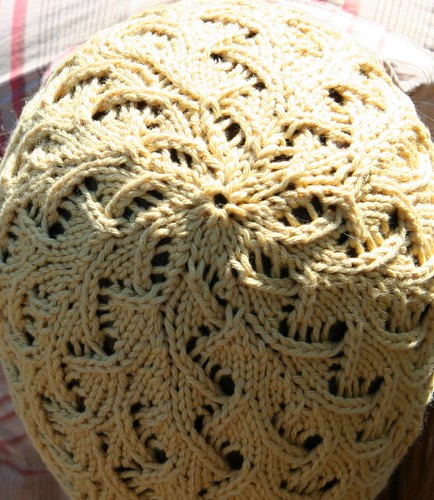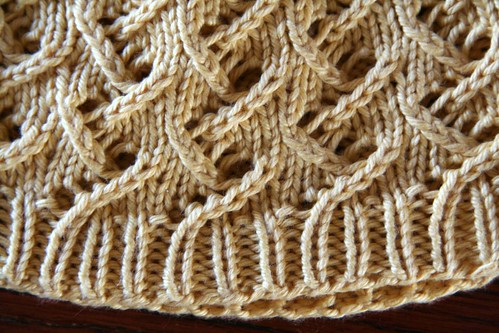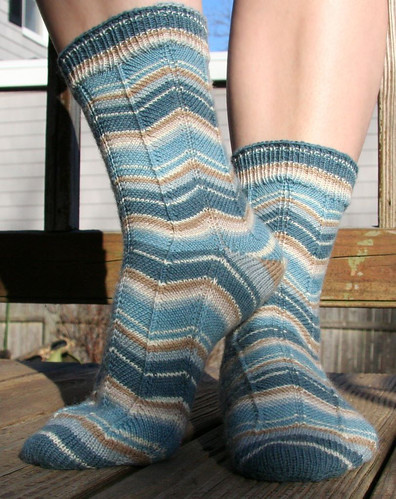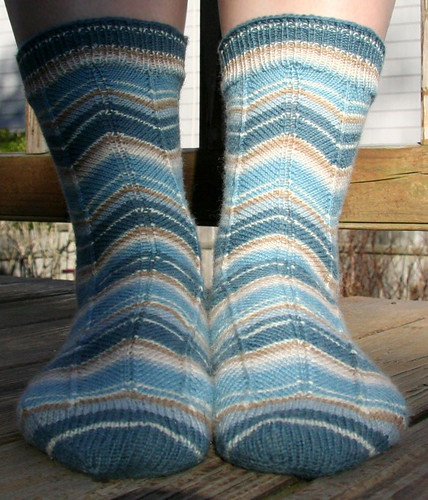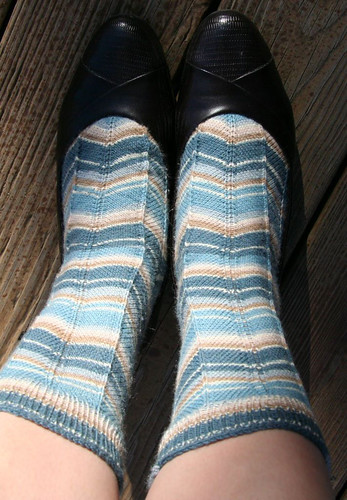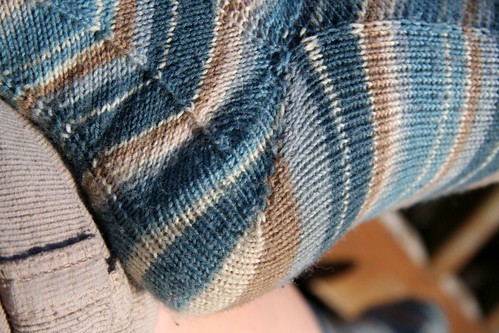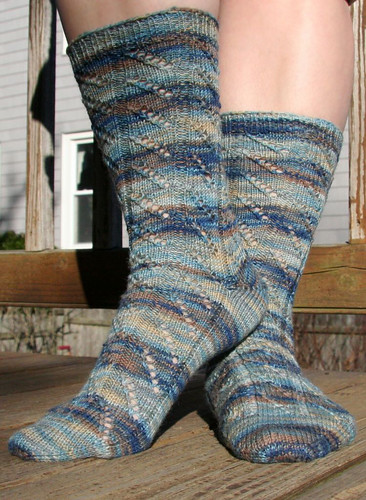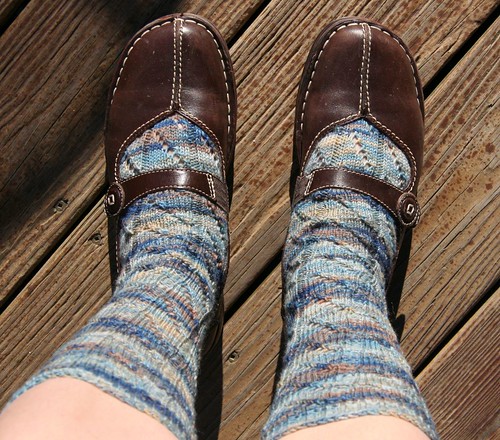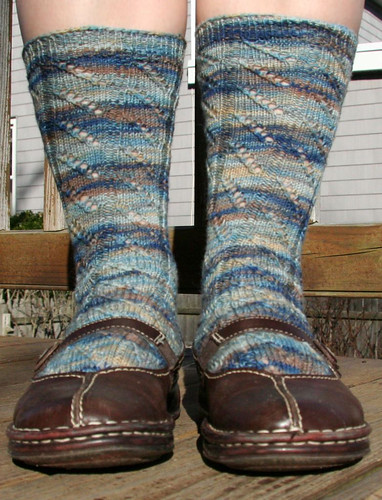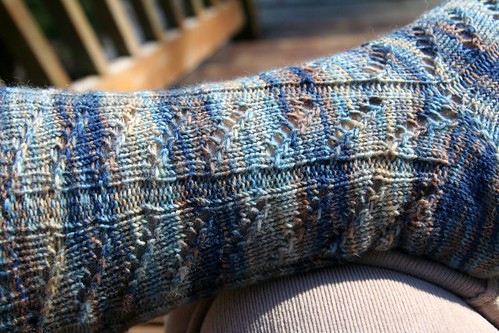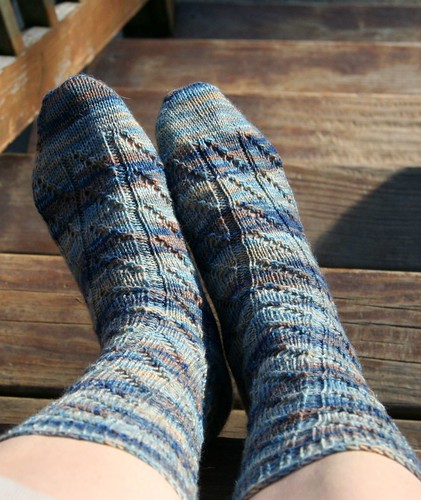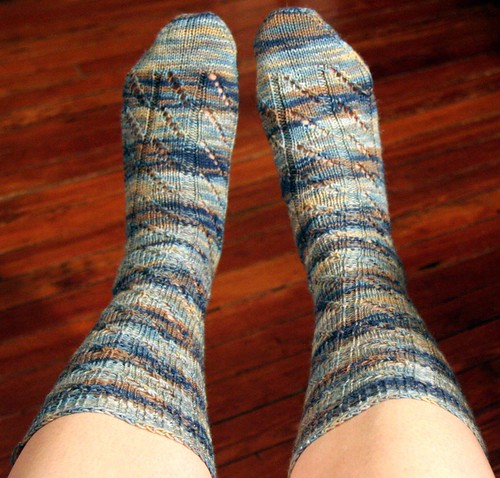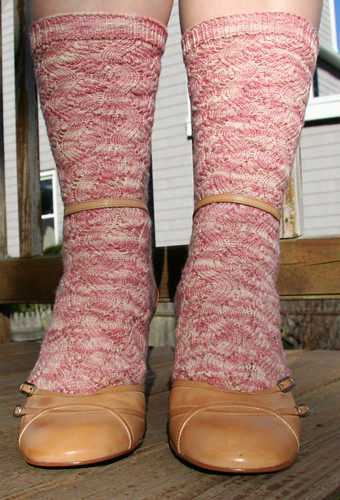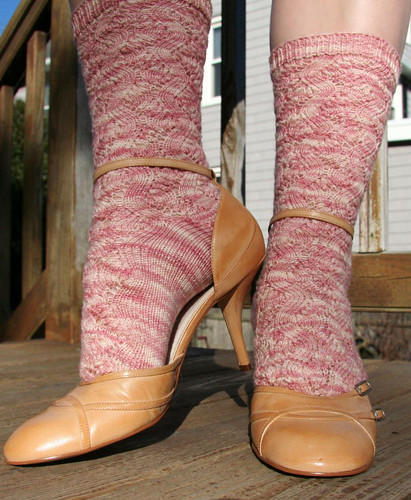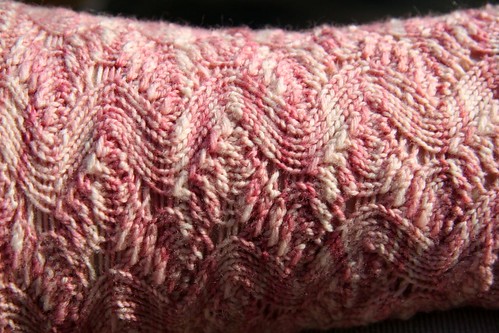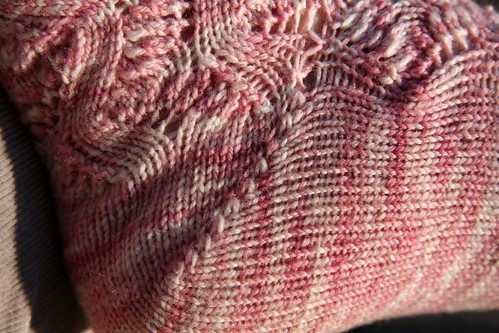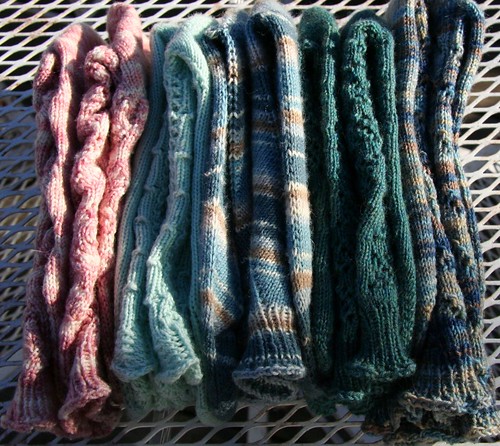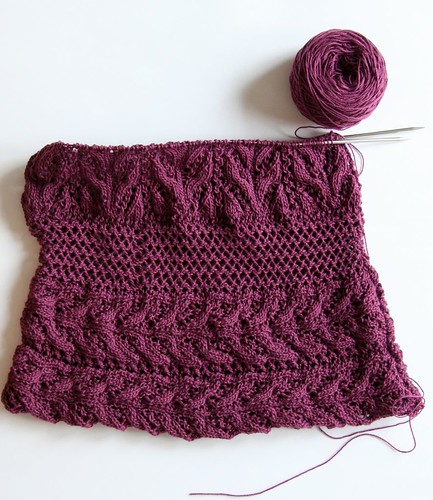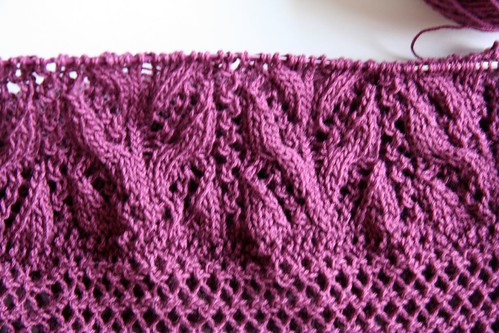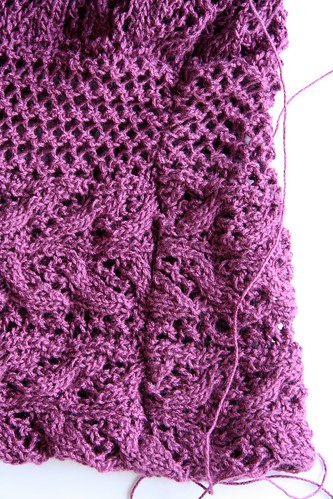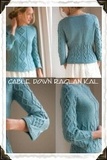Grape Lace
In what I'm sure will come as no surprise to anyone, I've started a new pair of socks. These are special because they're not the usual sock, so much as lace stockings, and well, I have reason to believe I'm going to love them.
So you've seen Bettie's Lace Stockings from the Spring 2009 Interweave Knits, right? As soon as I saw them, I fell in love and was certain I would be making them one day.

Among the numerous points that attracted me to this pattern (beautiful lace! size 2 needles! not a lot of yarn but you end up with knee socks! fast! stretchy! ribbons!!!), the fact that they are designed toe-up jumped out and made me extraordinarily happy. Toe-up is, to my thinking, the most logical and comforting way to knit socks, and I've noticed that the fit is much better than the top-down socks I've knit.
I changed the cast-on to my usual figure-8 (not a big fan of unpicking provisional cast-ons) and increased to 48 stitches, then got going with the pattern as written. Then I started feeling a little disconcerted.
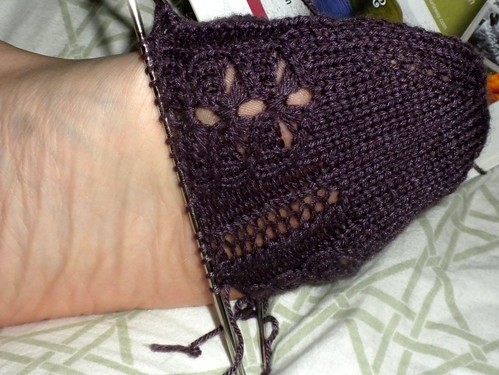
(This is actually the bottom of my foot.)
The elements of this design are essentially a wider central pattern of lace, flanked by two narrow eyelet panels. Eventually there will be calf increases and what all built into these elements, but on the foot, it felt very strange to work three sections of lace, two of which were split on the bottom of the foot. I tried to think through the logic on that, but when I realized that there would be a short-row heel interrupting the lace up the back of the leg anyway, I wondered if it wouldn't be better to knit the sole in stockinette?
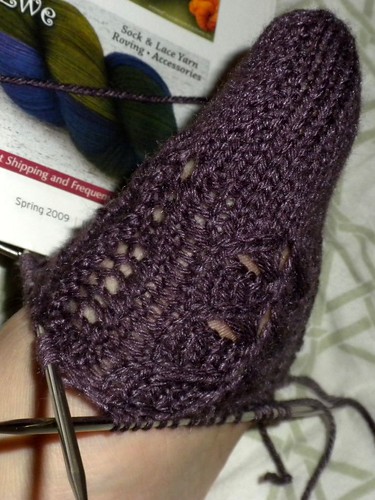
I hemmed and hawed about how well they would wear with sole lace, and whether I felt like knitting two extra repeats when I was only interested in the one on the top of the foot. When I noticed how many times I'd flubbed the eyelet panels (from losing track at the start of the row at the middle of the sole), I took it as a sign, frogged back to the toe and started over.
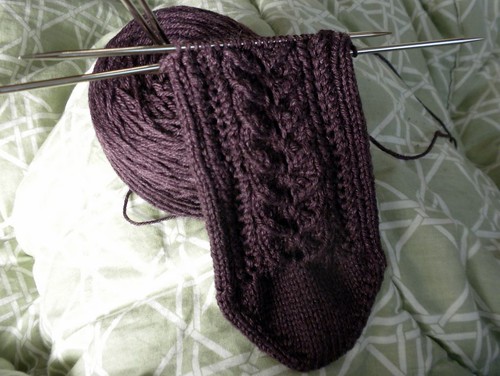
I am so much happier now. I have the wide panel of bee pattern lace centered between two narrow eyelet columns on the top of the foot, with the sole knit in plain stockinette. I'll work a regular short row heel, then follow the pattern afterwards for calf increases and so on. It's moving way, way faster, and I'm not so annoyed feeling like I'm putting a lot of effort into something that will get bedraggled in my shoes anyway.
If you're interested in making this change (and heck, for my own future reference when I inevitably forget what I did and need to match the second socks), it's quite easy.
Cast on using a figure-8 or Turkish cast-on, Judy's magic cast-on, etc and increase to 48 stitches. Or do whatever provisional toe-up cast-on you like, so long as you get to 48 stitches. When you switch to 3 needles (one for the top and two for the bottom), slip the first stitch of needle 1 and the last stitch of needle 2 to the bottom needles, such that you have 13 stitches on each of those and 22 stitches on the top needle.
P1, work a repeat of the narrow eyelet lace (in the pattern it is called Feathered Fagoting), work a repeat of the center bee lace (Narrow Gathered Lace), p1, work a second repeat of narrow eyelet lace, p1. Then knit the sole stitches in stockinette. Much easier, faster, and it retains the stretchiness of the pattern, with the sturdiness of a stockinette sole. Now these are socks I will love to knit as much as I'll love to wear them.

